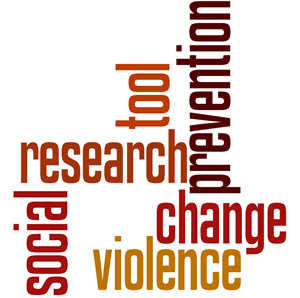
A Tool for Social Change
Media Contact
I recently returned from Australia, where I facilitated the Pacific Women’s Empowerment Policy dialogue on eliminating violence against women, and where it became abundantly clear that research can be a powerful tool for jump starting governments and communities into action.
Co-hosted by Australia and the United States, the meeting brought together more than 100 leaders from the Pacific Islands to address ongoing challenges to ending violence in the region. And the situation in the Pacific is indeed concerning: Research I led four years ago in Melanesia and East Timor showed that sexual and physical violence against women was a significant problem, although data documenting its prevalence were limited. Even more disturbing, most of the police, magistrates, health providers, traditional leaders and community members we spoke to considered violence against women to be a normal state of affairs.
Meanwhile, traditional customs such as bride price made it particularly difficult for women to escape a violent relationship. “He will say he’s paid bride-price so that gives him the right to hit her,” one woman told us. “The chief and the family will agree with this. They will say that ‘You are his property.’”In other cases, if a girl was raped, a typical solution was for her to marry the rapist – since no one else would wed a girl who was considered “spoiled” – or have the rapist pay compensation to the girl’s family in the form of woven mats, whale’s teeth or cash. We found that regardless of the scenario, almost no consideration was given to the needs of the survivor of violence.

Our 2008 report documented this situation and put forward concrete strategies to end violence against women. We stressed that research had to be a core element of the response.
Earlier this year, ICRW was hired to evaluate how much progress had been made since the last report. I was amazed at what we found: Since 2008, every government in the region had signed a declaration condemning violence against women. Legal reforms were enacted in several countries to protect the rights of survivors. Male advocates were trained to work with women’s rights advocates to raise awareness around violence against women. And efforts to engage faith-based organizations and male leaders were successful.
Research not only played a pivotal role in these outcomes, but also in fostering an enabling environment for ending violence against women. It demonstrated the extent of the problem and its impacts on women, households and communities. The evidence helped convince key stakeholders to take action. And it was because of the research findings that the Australian government approved a substantial increase in funding to address violence against women.
The experience from Melanesia has several lessons for those of us working to end violence against women. We need to know what is and isn’t working when violence-related laws, services and programs are implemented. This can only come with additional monitoring and evaluation research, such as what ICRW is doing with partners in Bangladesh to determine the impact of that country’s new domestic violence law. We also need to build the research capacity of grassroots organizations that are at the forefront of violence prevention and response activities. ICRW has been doing just that with the Gender-Based Violence Prevention Network, through which local advocates are trained to conduct research relevant to their ongoing work. Several of these studies were recently presented by our partners at the Sexual Violence Research Initiative meeting in Cape Town, South Africa.
Researchers’ standard mantra after completing a study is “more research is needed.” In the case of ending violence against women, we should all be taking up the call in recognition of the critical role research plays as a tool for social change.
